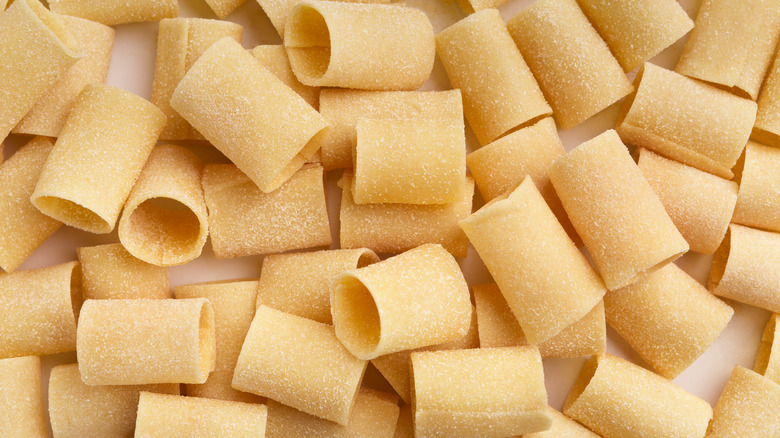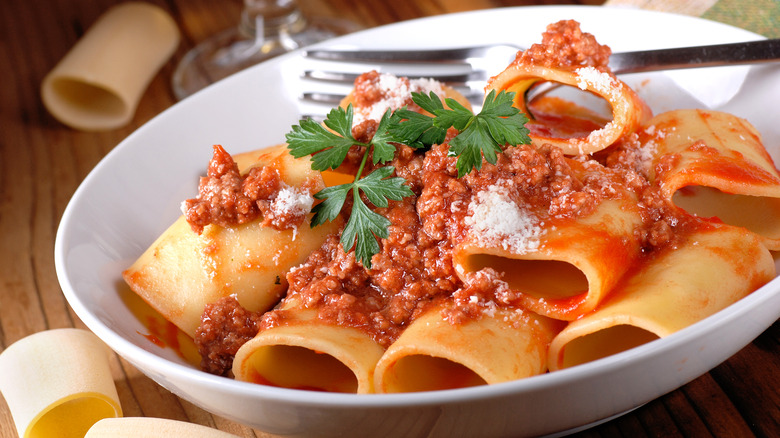Here's How To Cook With Paccheri Pasta
Not just hearty and satisfying, paccheri has a colorful and slightly shady past. At first glance, paccheri looks like souped-up rigatoni since the tube-shaped noodles resemble fat versions of their semolina brethren. Paccheri is a classic Neapolitan pasta that is so wide, it looks like a cut-up garden hose. The giant macaroni is typically made with durum wheat semolina and served with thick, rich sauces and seafood. Because the noodles are wide, they can also be stuffed with fillings and baked.
Paccheri has been a staple of southern Italy for eons and was once considered "pasta for the poor" because the inexpensive dough requires just flour and water, and small portions of the large noodles satisfy the heartiest of appetites, according to The Pasta Project. So, what's paccheri's shady past? Seems southern Italian pasta makers covertly invented paccheri in the Middle Ages, so they could smuggle garlic cloves across the alps to Austria (called Prussia at the time).
Prussia also farmed garlic, but their cloves were small and flavorless, especially when compared to the robust, pungent garlic of southern Italy (via Pasta Evangelists). In the early 1600s, Prussia banned imported Italian garlic in an effort to protect their own garlic farmers. That's where paccheri pasta comes in — the noodles were large enough to conceal four to five garlic cloves and transport them from one country to the next. The clandestine operation was so successful, the Prussian garlic industry collapsed in the early 1800s (via The Pasta Project).
Thick noodles require hearty, full-bodied sauces
Since paccheri is much like rigatoni, it cooks the same way — in boiling water, until al dente, which is about 14 minutes. If you don't have paccheri, rigatoni is an excellent substitute, just make sure to follow package directions as rigatoni may reach al dente a few minutes sooner. Because paccheri is hardy, it's best suited for thick sauces, which trigger the noodles to make a slapping sound when they're consumed. It's perfect for dense meals like meat ragùs, especially because the meat sauce works its way inside the wide, tender tubes and fills them with flavor. Paccheri also works well in oven-baked dishes that include cheese and rich tomato or fish sauces.
Another great option involves stuffing the paccheri noodles with ricotta, mozzarella, and parsley, then baking the pasta as a casserole under a canopy of tomatoes and cheese. And if you really want to impress your family or guests, try a paccheri recipe that features shrimp, squid, mussels, clams, white wine, crushed red pepper flakes, and good-quality olive oil. Your family will not only be impressed, they'll be stuffed.

